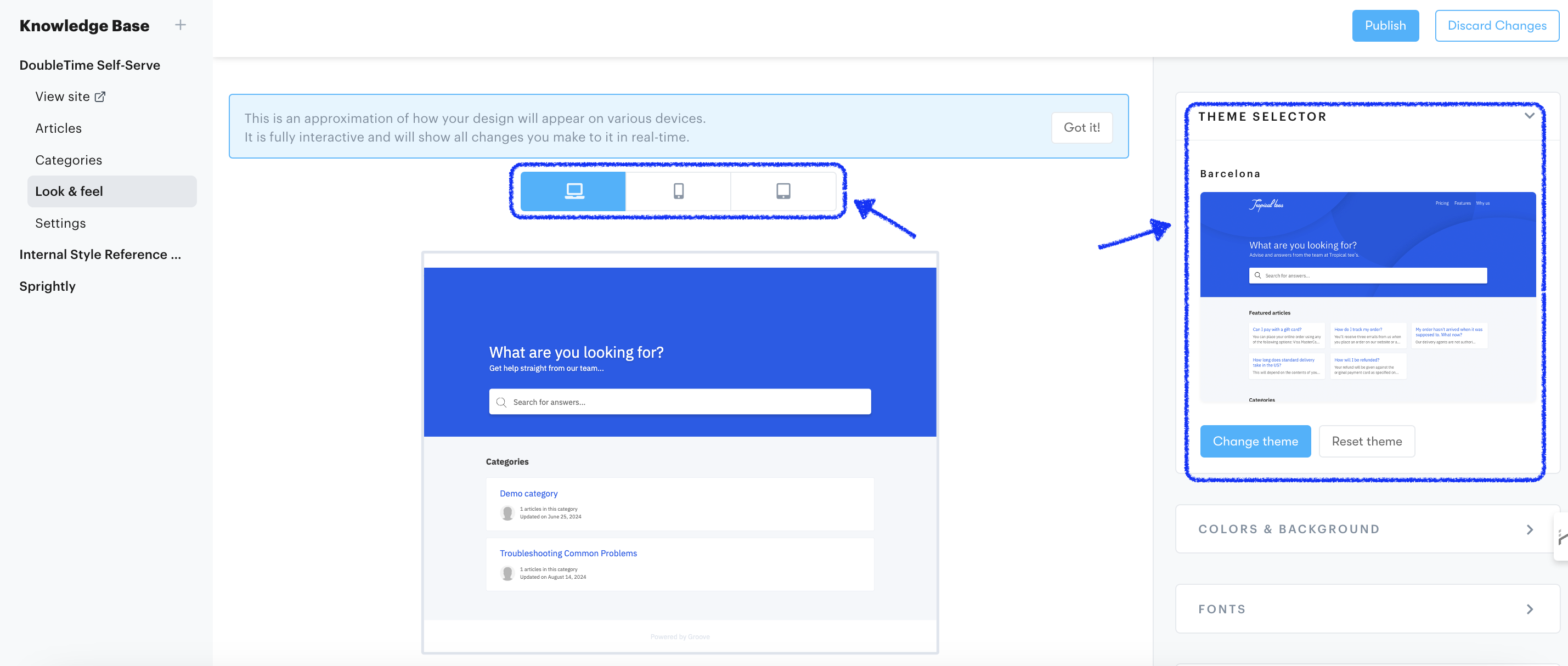Use these social media customer support tips to build better relationships with your customers.
It’s no longer a question of if your business needs to listen to your customers on social media.
According to the 2023 Sprout Social Index, 80% of consumers reported using social media for customer service more now than they did a year ago
It’s a question of how you listen, and, more important, how you respond.
And these are very important questions, because there’s a LOT at stake. A study found that companies who ignore support requests on social media see an average churn rate that’s 15% higher than companies who don’t.

And on the flip side, when companies engage and respond to customer service requests over social media, those customers, on average, end up spending 20% to 40% more with the company.

Building better relationships with your customers through social support can add up to huge wins when it comes to increasing customer lifetime value.
So how do you do it?
7 Best Practices for Social Media Customer Service
- Pick the Best Social Media Platforms for Your Business
- Monitor Social Media Mentions
- Look for Mentions That Might Not Be Obvious
- Speed Matters in Social Support
- Use the Right Tone of Voice
- Take Things Offline When Necessary… The Right Way
- Use Your Knowledge Base to Make Things Easy
7 Best Practices That Every Social Media Customer Service Strategy Needs
The good news is that while getting social media customer service right takes work, the best strategy is a pretty simple one: just follow these seven tips.
1) Pick the Best Social Media Platforms for Your Business
The problem with taking advice from someone else about the “best” platform to be on is that, well, they may very well be wrong.
The best platform for one business could be completely useless for yours.
What’s most important here is where your customers are.
And if you don’t know the answer to that, it’s a great idea to ask. A simple one-question survey, sent via email using a free service like Typeform or Google Forms, can point you in the right direction.

By going to where your customers actually are, you can deliver a support experience that’s native to their preferred network.
For example, KLM Airlines knows that many of their customers are professionals using LinkedIn. So the airline launched a special LinkedIn group that offers 24/7 customer support to KLM passengers.
Rather than having to email or call, KLM’s customers who are already on LinkedIn can get their issues resolved within a social network that they’re already on:

What you learn about where your customers spend their time might surprise you. Don’t make the mistake of assuming that Twitter or Facebook is the best fit for your audience just because you might spend the most time on them.
2) Monitor Social Media Mentions
You don’t actually have to stare at your social media feed all day (as tempting as that may be) to know when your customers need help.
There are some very useful tools now that will alert you when you get mentioned.
A good example of these tools is Mention.

These tools can help you stay on top of when and where your product gets mentioned so that you can respond to your customers. They’re great for marketing, but just as important for customer support.
To take things a step further, our team uses the Twitter and Facebook integrations in Groove to get social media mentions right in our help desk, where we can create support tickets from social mentions and respond directly from the app.

3) Look for Mentions That Might Not Be Obvious
Don’t assume that customers know your Twitter handle.
In fact, research shows that only 3% of brand mentions actually use a Twitter handle, instead opting for the company or product name.
Similarly, don’t assume that customers are spelling your company or product’s name right.

Search for your product or business name, along with misspelled variations, on a regular basis (some tools, like HootSuite, will automatically update your feed with new search results) to catch people who are having trouble.
4) Speed Matters in Social Support
While speed may not be most important factor for great support in email, phone, or in-person service, in social media, speed trumps all.
In a survey by The Social Habit, 32% of social media users who contact a brand expect a response within 30 minutes, and 42% expect a response within 60 minutes.

The fast-paced nature of social media—built around live feeds—creates expectations that are different from platforms like email, where a 24-hour response time is a bit more acceptable.
But for social, make an effort to respond as quickly as you can.
5) Use the Right Tone of Voice
Your tone of voice is massively important in customer support.
This can pose a bit of a challenge in social media, where some platforms, like Twitter, limit you to short messages which make it a lot more difficult to get tone and nuance right.
The right tone depends on your customer, and the best way to get tone right is to adjust your tone to match the customer.
There are a few easy cues you can practice spotting in any social media message:
- Does the customer use emoticons, exclamation points and slang? (This is a green light for you to reciprocate.)
- Does the customer sound like they might not be totally fluent in your language? (In this case, you need to be much more careful with nuances like slang.)
- Does the customer sound frustrated? (Turn up the empathy and use tone that’s understanding, apologetic and reassuring.)
One company that does this really well is JetBlue. You can learn a lot about tone by watching their Twitter feed.
Notice how they tailor their tone to each customer.
When the customer is frustrated, they focus on empathy and apology:

When the customer is happy, but not using a super-casual tone, they do the same:

And when the customer makes it obvious that casual and edgy are both okay, the airline reciprocates:

Learning to pick up on your customers’ subtle cues makes delivering service in the right tone of voice much, much easier.
6) Take Things Offline When Necessary… The Right Way
As important as it is to listen and respond to your customers on social media, not every issue can be resolved via social.
Sometimes, the medium doesn’t allow you to write as long of a reply as you need to.
Sometimes, you need sensitive customer information that you (or they) wouldn’t be comfortable exchanging online.
In these cases, it’s okay to transfer the issue to another channel like email or phone.
But it’s important to do this right.
One study about the things that annoy customers most had 37% of respondents mention “getting passed around” as a source of frustration.
That is, getting passed from one agent to another, or one channel to another.
Simply telling your customer that they need to call or email for help isn’t going to cut it; it comes off as rude, abrasive and completely lacking empathy (the most important customer service skill).
Instead, use the same friendly, helpful tone you normally would, and start the process of making the customer feel cared for by emphasizing that you’re not just handing them off, but that you’re going to make things right.
Tone and empathy are incredibly important in all customer service, but even more so when you’re asking the customer to do more work to get their issue resolved.
7) Use Your Knowledge Base to Make Things Easy
Using a knowledge base for customer service has a lot of benefits.

It can help you cut down on support tickets, deliver faster customer service, and make your customers happier.
And largely, your customers want to use it.
In a survey by Coleman Parkes of nearly 3,000 online consumers, an overwhelming 91% said they would use an online knowledge base if it were available and tailored to their needs.
But a good knowledge base can help you deliver better support in social media, too.
By linking to knowledge base articles, you can save time for yourself and make life easier for your customers. Rather than having to explain multi-step processes over social media, you can provide them with easy-to-follow, step-by-step guides built to help.
Social Media Customer Service Can Help Grow Your Business
Social media customer service is a must-have if you want your business to thrive in today’s digital landscape.
And by implementing these seven best practices, you’re building relationships, boosting loyalty, and ultimately, growing your business
Remember, every tweet, comment, or DM is an opportunity to turn a frustrated customer into a raving fan. And those fans? They’re the ones who’ll spend 20% to 40% more with your company.
Ready to take the plunge? Start by implementing just one of these tips today. Then watch as your customer relationships (and your business) flourish.





